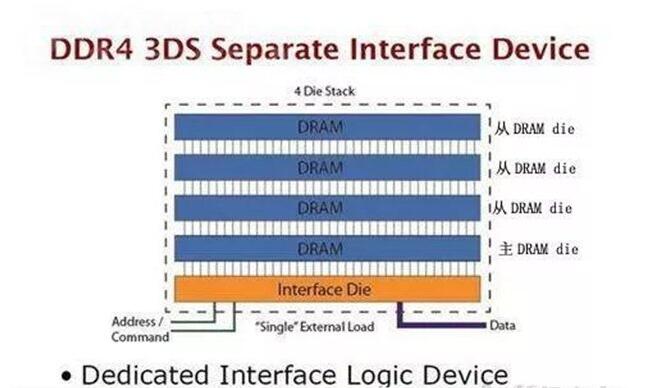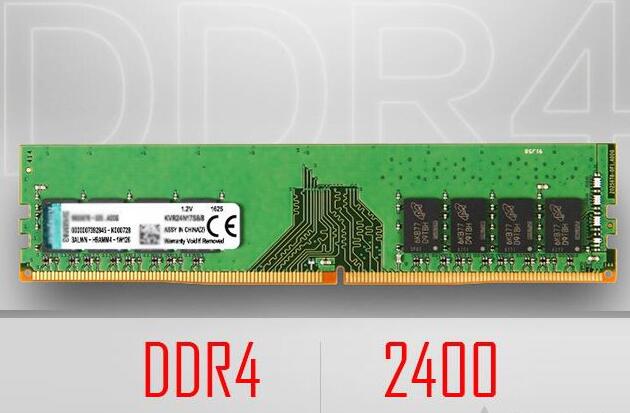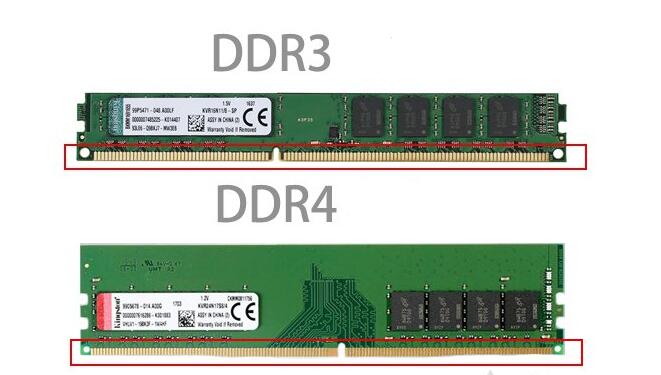Nowadays, the new computer has completely popularized DDR4 memory, which is already the mainstream. From the history of memory development, memory development has evolved toward high-frequency, low-power routes, and DDR4 memory is no exception, so what is the difference between DDR3 and DDR4 memory? What improvements does DDR4 have over DDR3 memory? The following installed home to help the majority of users come to science knowledge.
What is the role of computer memory?
Memory and CPU are bridges. Any program running in the computer must pass through the memory. We run a program in the computer. The CPU needs to transfer the data of the CPU operation to the memory for calculation. After the operation is completed, the CPU will return the result. Send it out. In layman’s terms, memory is the bridge between the CPUs. If the bridge is wider and wider, the more cars you can pass, the faster.
The difference with the hard disk is that the data stored in the memory is temporary storage. Once the computer is powered off, shut down, and restarted, the data in the memory will be emptied, and after the hard disk is powered off, no data is lost, as long as you do not delete it. Without formatting, the data is still stored on the hard disk.
What is the difference between DDR3 and DDR4 memory?
1, capacity changes
DDR4 memory uses Differential Signaling (Digital Signaling) and 3D Stacking (3DS). DDR4 memory uses both traditional SE signals and differential signal technology. The traditional SE signal transmission mechanism is susceptible to interference at high frequencies, while differential signaling technology uses two lines to transmit one signal, greatly increasing anti-jamming. ability. It is used to increase the capacity of a single chip. After using 3DS stacking technology, the capacity of a single memory can be up to 8 times that of DDR3 products. For example, the current large-capacity memory has a single capacity of 8GB (512 chips for a single chip, a total of 16), while DDR4 can reach 64GB or even 128GB.

2, memory power consumption
In terms of memory power consumption, the operating voltage of DDR4 memory is further reduced to 1.2V, which is also lower than the 1.5V operating voltage of DDR3 memory. The reduction of power consumption can reduce the power consumption and heat generation of the memory, so as to improve the stability of the memory stick, and there is basically no frequency reduction caused by heat.
3, memory frequency and bandwidth
The working frequency of DDR4 memory starts from 2133MHZ and can reach up to 4266MHZ. Compared with DDR3 memory, the operating frequency and memory timing are greatly improved. Each pin of DDR4 memory can provide 2Gbps (256MB/s) bandwidth, and DDR4-3200 is 51.2GB/s, which is more than 70% higher than DDR3-1866.

4, appearance changes
Historical memory gold fingers have always been straight, until after DDR4 memory, the design of the gold finger is slightly protruding in the middle, while the edge is short, the design benefits the situation to protect the DDR4 memory gold finger and memory slot touch The point has enough contact surface to ensure stable signal transmission, and also solves the problem that the memory is difficult to pull out and difficult to insert. The gap (anti-lost) in the middle of the DDR4 memory gold finger is closer to the middle than DDR3.

In terms of the number of gold finger contacts, there are 284 DDR4 memories, and 240 DDR3 memories, and the spacing of each contact is reduced from 1 mm to 0.85 mm.
Is DDR4 and DDR3 compatible?
Due to the difference in DDR3 and DDR4 gold finger design, and the location of the foolproof port, the two are not compatible.
Learn to distinguish between desktop and notebook memory
Notebook and desktop memory modules are different in size, and desktop memory is longer than notebook memory, as shown in the following figure.
Computer memory stick purchase knowledge and precautions
1. Users who upgrade their computers need to confirm whether their motherboard supports DDR3 or DDR4 or even DDR2. Generally speaking, in recent years, computers have adopted DDR4 memory. DDR4 or DDR3 memory on the motherboard, you need to see the motherboard slot type, the general motherboard slot labeled 1.2V is DDR4 memory, if the 1.5V is DDR3 memory, and the DDR and DDR2 memory voltage is 2.5V and 1.8V.
2, according to personal needs to choose the right memory capacity, the current mainstream memory capacity is 8G, 8G is enough for ordinary users, if the pursuit of high-performance experience, at least 16G, professional top performance platform, at least 32G capacity. If you don’t know how much capacity you need, you can choose 8G memory for a while, after all, memory upgrade is very convenient.
3, for the frequency, DDR3 mainstream frequency is 1600MHz frequency, DDR4 current mainstream is 2400MHz frequency, although the market currently has DDR4 2666/3000MHz or even higher frequency, but from the performance improvement and cost performance consideration, DDR4 2400/2666Mhz is enough, after all, memory Frequency to performance improvement is negligible.
4, memory brands try to choose familiar brands, quality, stability, after-sales are guaranteed, memory brands such as Kingston, ADATA, Apacer, Corsair, Zhiqi, GALAXY, Jintaike, Yingruida and so on.
The above is the DDR3 and DDR4 memory knowledge shared by the installed home, computer memory stick purchase knowledge and precautions, I hope this article can help the majority of computer enthusiasts.
Offered by https://www.parts-dell.cc/





